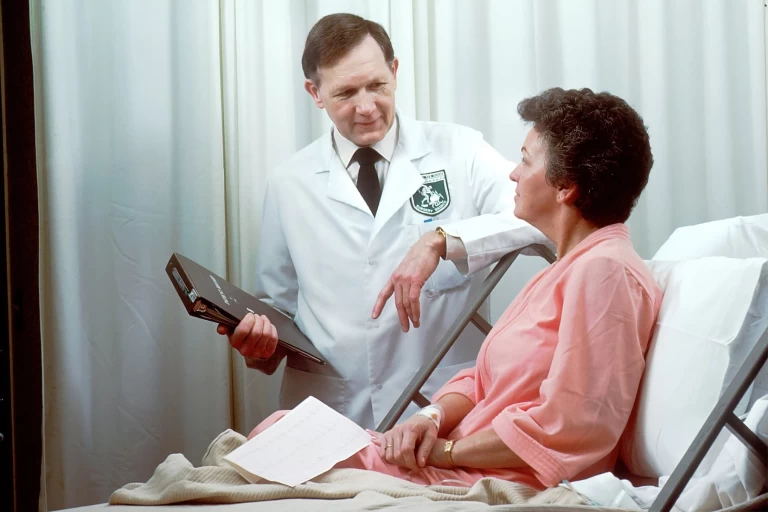
The first step in any orientation is to clarify what chiropractic care is and how it differs from other medical approaches. Chiropractic care is grounded in the philosophy of holistic health and natural healing, aiming to optimize the body's self-regulatory functions without relying on medications or invasive procedures. Chiropractors believe in the body’s innate capacity to maintain health, with particular emphasis on spinal alignment to facilitate this process.
Building a Foundational Understanding of Chiropractic Care
This introduction can be particularly valuable for new patients, as it addresses potential questions and establishes a solid foundation for understanding chiropractic adjustments. Explain how a misalignment, or subluxation, in the spine can disrupt nervous system function, potentially affecting various bodily systems and overall wellness.
Personalized Communication: Addressing Each Patient’s Needs
A personalized patient orientation starts by addressing the patient's specific concerns and health goals. From the first interaction, take time to discuss why they sought chiropractic care and what they hope to achieve. This personal attention not only fosters trust but also helps in tailoring explanations to their individual needs.
For example, if a patient suffers from chronic migraines, explain how chiropractic adjustments might relieve nerve pressure that could be contributing to their symptoms. Personalized orientation assures patients that their unique conditions are being understood and considered. It also establishes the chiropractor as a partner in their healthcare journey rather than just a treatment provider.
Clear Outline of Procedures and Expectations
Transparency about procedures and the overall treatment plan is crucial for managing expectations and building confidence. Begin by describing the typical diagnostic and treatment process, which may include X-rays, spinal assessments, and hands-on adjustments. Emphasize that these initial procedures are essential for accurately identifying misalignments or other conditions that may be impacting their health.
Outline each diagnostic tool’s purpose, such as explaining that an x-ray helps visualize spinal structure and identify any misalignments contributing to their discomfort. If specialized assessments are necessary, like reflex tests or palpation, explain how these techniques provide additional insight into their condition. Patients benefit from understanding each procedure’s role in creating a comprehensive view of their health.
Setting expectations about the duration and frequency of care is also essential. Many chiropractic treatments require a series of visits to correct misalignments and maintain spinal health gradually. By helping patients understand the benefits of regular appointments, you can reinforce their commitment to a consistent treatment plan.
Providing Educational Resources for Empowered Decisions
One of the most effective ways to make patient orientation informative is by offering accessible educational resources that reinforce what’s discussed in person. Distribute clear and concise written materials about the basics of spinal health, how chiropractic adjustments work and common conditions treated in a chiropractic setting.
Visual aids, such as diagrams of the spine, are valuable tools that make complex anatomical concepts easier to understand. For example, a simple illustration of spinal segments can help patients visualize where specific adjustments may be focused and how these corrections may alleviate their symptoms.
Encouraging questions and helping answers in understandable language patients feel informed and empowered. Consider offering links to reputable online resources or handouts that they can refer to at home. These educational resources enable patients to deepen their understanding and participate actively in healthcare decisions.
Building Confidence through Transparent Reporting
After the initial assessment, share a detailed report with the patient. This report should include the findings from their x-rays, physical exams, and any other assessments. Highlight the specific areas of misalignment or concern, such as a subluxation in a particular cervical vertebra that may be causing neck pain or headaches. When possible, relate these findings directly to their symptoms, helping them connect the dots between spinal health and their personal experience of discomfort.
Explain the treatment plan in straightforward terms, outlining how adjustments and other interventions will address the issues found. Many patients feel reassured by understanding the rationale behind each aspect of their care. For instance, if a patient’s x-rays reveal a misalignment at the atlas (C1) vertebra, explain how this impacts the nervous system and why specific adjustments will target that area.
Additionally, share success stories from other patients who have had similar issues. This approach helps patients see the potential outcomes of their treatment and fosters confidence in the process.
Fostering a Supportive Environment and Patient Engagement
A personalized orientation is also about creating a supportive atmosphere where patients feel comfortable voicing concerns and asking questions. Acknowledge that healing is a collaborative journey, where patient engagement plays a critical role. For example, discussing posture, exercises, and lifestyle modifications that complement their chiropractic care can help patients take a proactive role in their recovery.
Encourage patients to attend follow-up appointments as scheduled, emphasizing the importance of regular adjustments for maintaining spinal health. Educate them about the potential effects of missing appointments, which may result in slower progress. If the treatment plan changes over time, explain these adjustments transparently, involving them in decisions about their ongoing care.
It’s also beneficial to check in with patients regularly to track their progress and make any necessary changes to their care plan. A positive and open environment where patients feel supported is key to building long-term relationships and promoting consistent engagement with their chiropractic treatment.
Reinforcing the Patient’s Role in Their Health Journey
Conclude the orientation by reinforcing the idea that chiropractic care is a partnership. Invite patients to take an active role in their treatment by following recommended exercises, adopting healthier habits, and maintaining regular visits. Stress that their commitment to these practices will enhance their outcomes and promote long-term health benefits.
Providing information in this structured, supportive, and personalized manner reassures patients that chiropractic care is a holistic, patient-centered approach designed to help them achieve their health goals. By fostering trust, transparency, and education from the outset, chiropractors can make patient orientation both informative and meaningful, setting the foundation for a successful therapeutic relationship.
Through this approach, patients gain a clear understanding of chiropractic care, feel empowered in their journey, and develop confidence in their treatment plans. Personalizing patient orientation supports a positive experience and helps cultivate an engaged and informed patient community.


